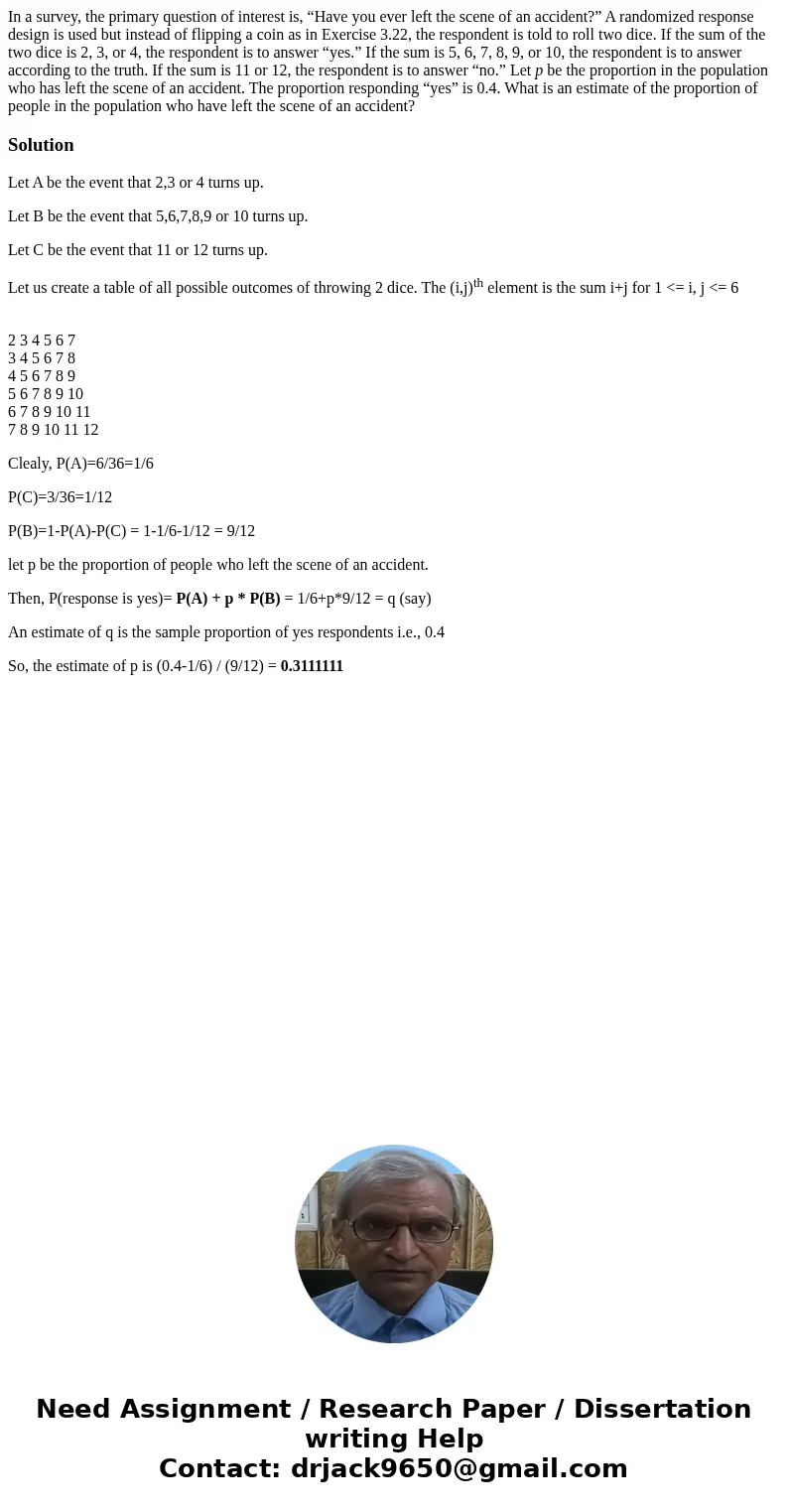In a survey the primary question of interest is Have you eve
In a survey, the primary question of interest is, “Have you ever left the scene of an accident?” A randomized response design is used but instead of flipping a coin as in Exercise 3.22, the respondent is told to roll two dice. If the sum of the two dice is 2, 3, or 4, the respondent is to answer “yes.” If the sum is 5, 6, 7, 8, 9, or 10, the respondent is to answer according to the truth. If the sum is 11 or 12, the respondent is to answer “no.” Let p be the proportion in the population who has left the scene of an accident. The proportion responding “yes” is 0.4. What is an estimate of the proportion of people in the population who have left the scene of an accident?
Solution
Let A be the event that 2,3 or 4 turns up.
Let B be the event that 5,6,7,8,9 or 10 turns up.
Let C be the event that 11 or 12 turns up.
Let us create a table of all possible outcomes of throwing 2 dice. The (i,j)th element is the sum i+j for 1 <= i, j <= 6
2 3 4 5 6 7
3 4 5 6 7 8
4 5 6 7 8 9
5 6 7 8 9 10
6 7 8 9 10 11
7 8 9 10 11 12
Clealy, P(A)=6/36=1/6
P(C)=3/36=1/12
P(B)=1-P(A)-P(C) = 1-1/6-1/12 = 9/12
let p be the proportion of people who left the scene of an accident.
Then, P(response is yes)= P(A) + p * P(B) = 1/6+p*9/12 = q (say)
An estimate of q is the sample proportion of yes respondents i.e., 0.4
So, the estimate of p is (0.4-1/6) / (9/12) = 0.3111111

 Homework Sourse
Homework Sourse